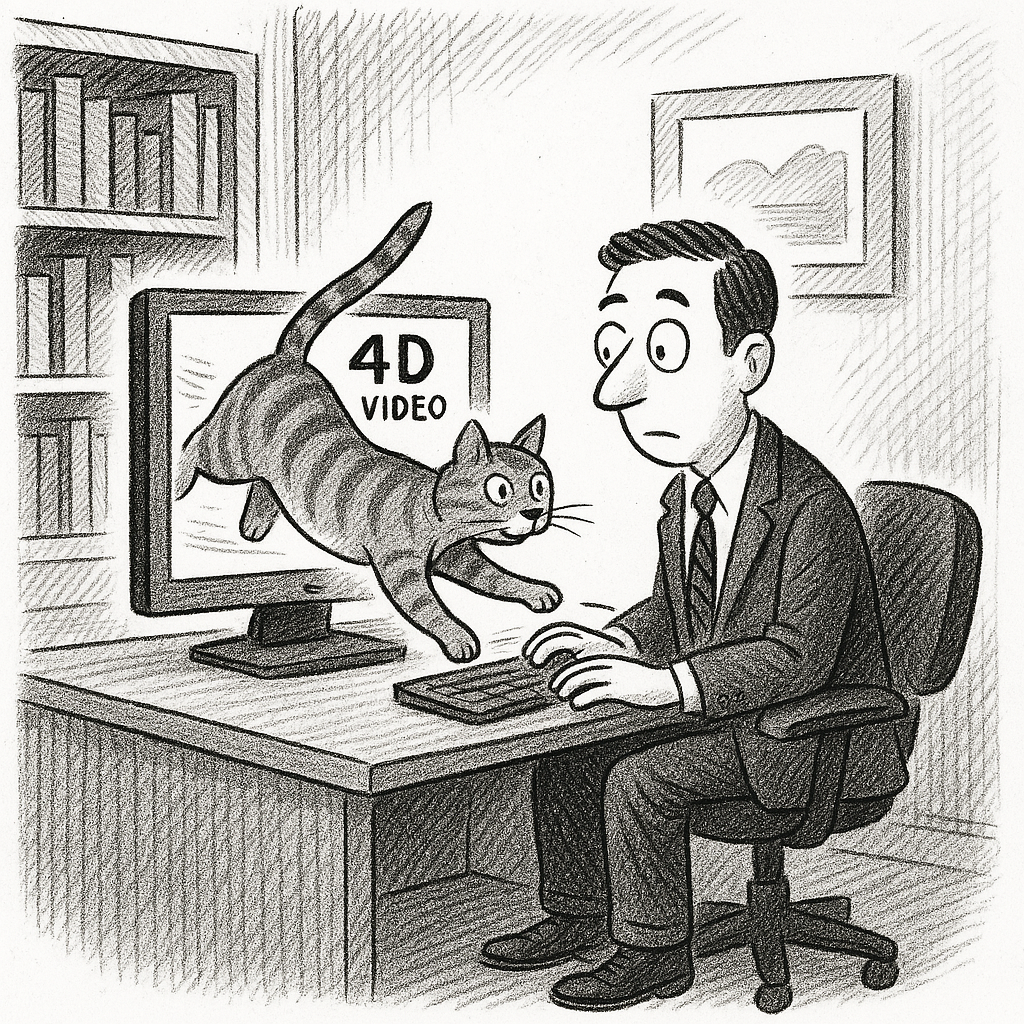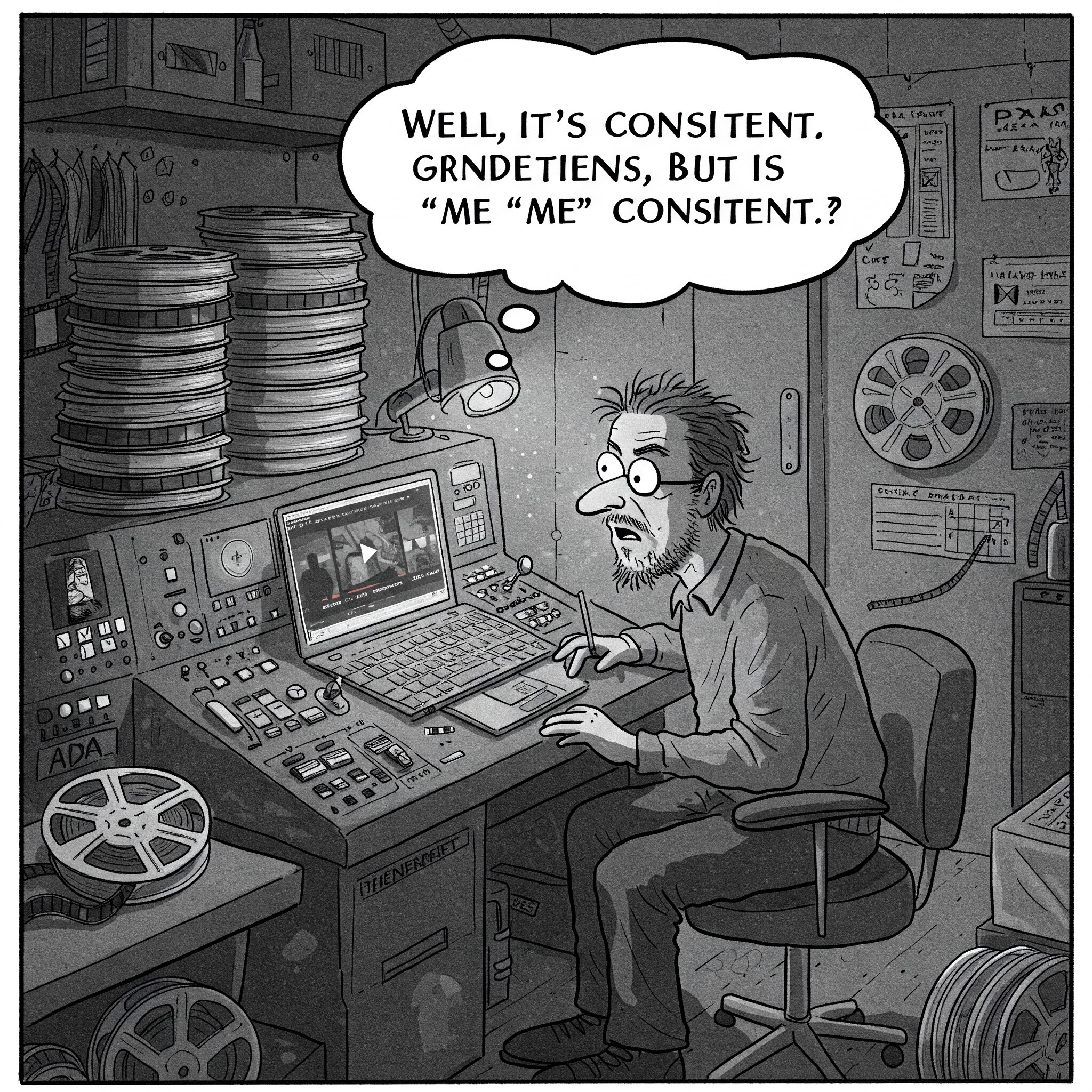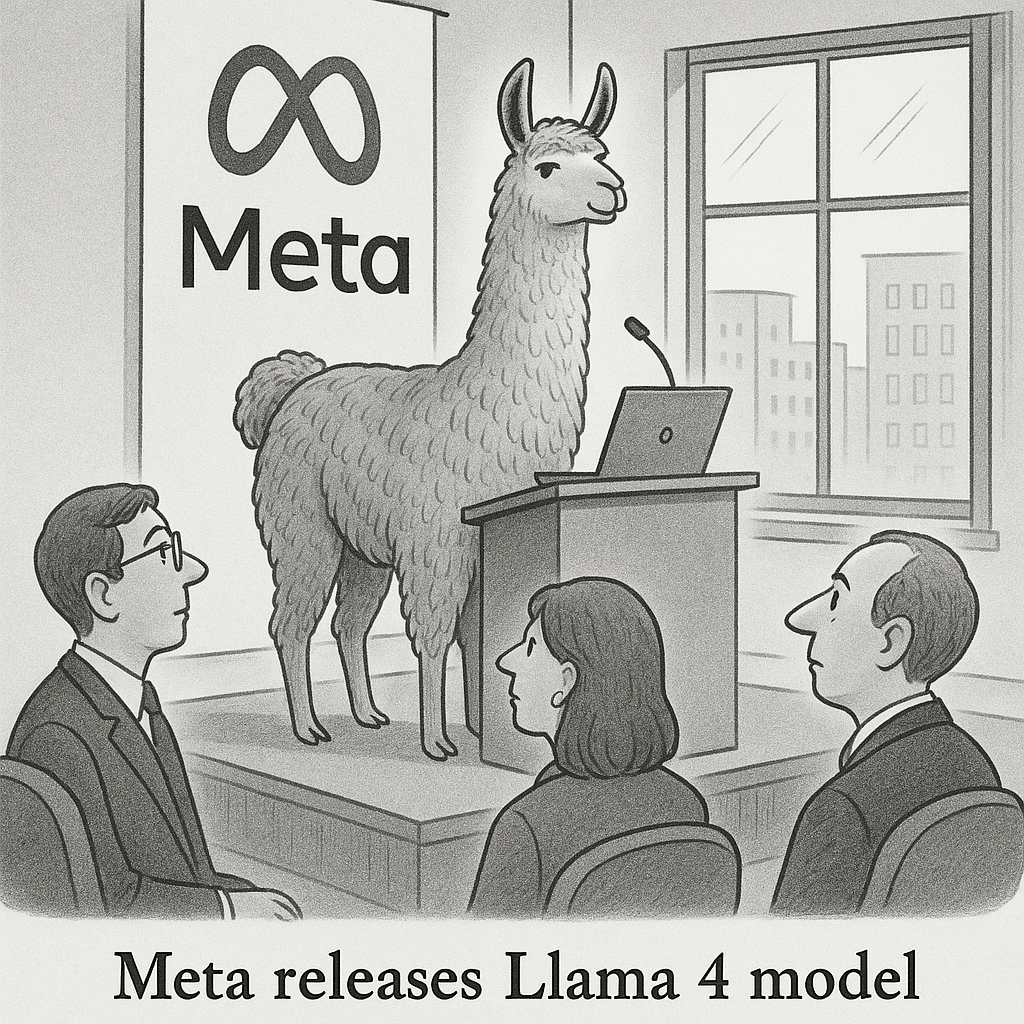Google DeepMind Unveils Cat4D: Transforming Videos into Interactive 4D Experiences
Google DeepMind has recently announced the development of a groundbreaking technology called Cat4D
Google DeepMind, a leading artificial intelligence research laboratory, has recently announced the development of a groundbreaking technology called Cat4D.1 This innovative system marks a significant leap forward in the way individuals can interact with video content. Cat4D possesses the remarkable ability to convert standard two-dimensional videos into immersive, dynamic four-dimensional scenes.3 This development is poised to unlock a plethora of exciting possibilities across a diverse range of fields, spanning from the entertainment industry to cutting-edge scientific research.1
At its core, Cat4D, an acronym for "Create Anything in 4D," represents a novel method conceived by researchers at Google DeepMind in collaboration with experts from Columbia University and UC San Diego.1 This technology leverages the power of artificial intelligence to process conventional monocular videos, which are recordings captured from a single camera perspective.1 The system then meticulously analyzes this input video to generate dynamic three-dimensional scenes that evolve over time, thus earning the designation "4D".1 Envision the capability not only to watch a video but also to explore the depicted scene from various angles and even navigate through different moments within that recording. This level of interactive engagement encapsulates the fundamental essence of what Cat4D makes possible.3
The technological foundation of Cat4D rests upon a sophisticated multi-view video diffusion model.1 This advanced AI model undergoes extensive training on a vast and diverse dataset encompassing both real-world and computer-generated video footage.2 This training data includes multi-view images of static scenes, single-perspective videos, and synthetically created 4D data, an approach that effectively addresses the inherent challenge of limited training data often encountered in this domain.2 Given a standard monocular video as input, the model exhibits the capability to generate multiple novel viewpoints of the scene, effectively simulating the presence of several cameras filming concurrently.1 Subsequently, these generated multi-view videos serve as the basis for reconstructing a dynamic three-dimensional scene. This reconstruction process employs a technique known as "deforming 3D Gaussians," which allows for a highly detailed representation of the scene's geometry and visual appearance, capable of changing over time.1 In essence, this process empowers the AI to intelligently infer the missing perspectives and construct a comprehensive, explorable 3D environment from a single video recording.3
Cat4D boasts several remarkable capabilities that set it apart from existing video technologies.1 One notable feature is novel view synthesis, which allows the generation of scene perspectives that were not captured in the original video.2 This provides a more complete understanding of the environment and the events occurring within it. Furthermore, Cat4D offers separate camera and time control, a significant advancement enabling independent manipulation of the viewpoint (camera angle) and the temporal aspect within the generated 4D scene.1 This functionality allows users to examine specific moments from various angles or observe the scene's evolution from a fixed perspective. For instance, starting with just three input images, the system can produce sequences illustrating a static viewpoint with changing time, a dynamic viewpoint with static time, or variations in both viewpoint and time.1 To facilitate direct interaction with this technology, Google DeepMind has developed an interactive viewer that allows users to render and explore these 4D scenes in real-time within a web browser.1 This provides a practical, hands-on experience with the technology, although it is currently in an experimental phase and optimized for newer versions of Chrome.1 Additionally, Cat4D can create a "bullet-time" effect by reconstructing a static 3D scene at a specific moment in time using only a few still images of a dynamic scene taken from different angles.1 This showcases its potential for innovative visual effects. Researchers have indicated that Cat4D achieves superior quality in its results compared to similar existing systems, although it currently faces limitations in generating videos that extend beyond the duration of the original input footage.2
The unique capabilities of Cat4D hold the potential to transform a multitude of industries by offering novel methods for visualizing and interacting with dynamic scenes.1 In the realm of entertainment, encompassing film and gaming, Cat4D could empower filmmakers to craft more immersive and dynamic scenes, enabling intricate visualizations from diverse perspectives.1 Game developers could leverage this technology to design expansive, interactive environments that respond fluidly to player actions, thereby enhancing the realism of gameplay.1 Imagine the experience of watching a movie and having the ability to shift your viewing angle or exploring a virtual game world with an enhanced sense of three-dimensionality. For virtual and augmented reality (VR/AR) applications, Cat4D could prove instrumental in generating more realistic and engaging content.1 This could pave the way for more immersive educational simulations, virtual tours, and training environments. The capacity to generate dynamic 3D scenes from standard videos could also significantly streamline and reduce the cost associated with creating VR/AR content. In medical imaging, the transformation of 2D medical scans or single-angle medical videos into interactive 3D models could furnish medical professionals with a more detailed understanding of patient anatomy, potentially leading to improvements in diagnostics, surgical planning, and personalized treatment approaches.4 Furthermore, cultural preservation efforts could benefit immensely, with historical sites or artifacts being digitally preserved in 3D, allowing future generations to explore them virtually, even if the physical structures are lost or damaged.4 The real estate and architecture sectors could also see significant changes, with potential buyers able to conduct virtual tours of properties in 3D from any location, and architects capable of previewing their designs in a fully interactive environment before any physical construction commences.4 Education and training could become more captivating and effective, with students able to virtually traverse historical events or conduct scientific experiments in a 3D environment.4 Beyond these applications, Cat4D could also enhance surveillance and security by enabling the reconstruction of dynamic events from surveillance footage in 3D, facilitating more thorough analysis.7 In sports analysis, the creation of "bullet-time" effects and novel viewpoints could offer valuable insights into athletic performances.7 The realm of advertising could also be revolutionized, with brands offering consumers interactive 4D experiences of their products, potentially leading to more engaging marketing campaigns.4 Even robotics could see advancements, as providing robots with a richer, dynamic 3D understanding of their surroundings could improve their navigation and interaction capabilities.7
While precise details regarding a public release date are somewhat dispersed across the available information, the announcement of Cat4D appears to have occurred around late November or early December of 2024.1 Several sources indicate that the technology was presented at the NeurIPS 2024 conference, which took place in Vancouver, Canada, from December 10th to 15th, 2024.10 The corresponding research paper detailing Cat4D was also made available on the arXiv preprint server around late November 2024.1 Notably, an interactive viewer showcasing the capabilities of Cat4D is currently accessible online for users to experience.1 Some reports even suggest that the technology is available "today" or "for free on your browser," implying a certain level of public accessibility, at least in the form of an interactive demonstration.5
Looking towards the future, the researchers at Google DeepMind and their collaborators are likely to continue their work on refining and enhancing the capabilities of Cat4D.1 Potential future developments could involve expanding support to a wider range of web browsers, moving beyond the current experimental support for newer Chrome versions.1 Improvements in the quality of rendered images and the system's ability to handle more complex scenes with greater detail are also anticipated.4 Furthermore, there is potential for integrating more advanced artificial intelligence techniques to further automate the process of scene generation and possibly even predict future events based on the input video data.1 Given the technology's capacity to reconstruct scenes from limited input data, it is also plausible that future research and development will address potential implications for privacy and data security.4
In conclusion, Google DeepMind's Cat4D represents a significant advancement in the field of artificial intelligence-powered video processing. Its remarkable ability to transform standard videos into interactive four-dimensional experiences holds the potential to revolutionize how individuals consume and interact with digital content across a vast spectrum of industries. From enriching entertainment and education to providing innovative tools for medical professionals and cultural heritage preservationists, Cat4D offers a compelling glimpse into a future where digital media is more dynamic, immersive, and interactive than ever before. As this technology continues its evolution, its impact on our daily lives is likely to become increasingly profound.
Works cited
Google DeepMind Introduces CAT4D to Create Anything in 4D with ..., accessed April 3, 2025, https://digialps.com/google-deepmind-introduces-cat4d-to-create-anything-in-4d-with-multi-view-video-diffusion-models/
CAT4D from Google Deepmind turns videos into simple 3D scenes, accessed April 3, 2025, https://the-decoder.com/cat4d-from-google-deepmind-turns-videos-into-simple-3d-scenes/
Google DeepMind's Cat 4D: Transforming ONE Video into a Dynamic 3D World! - YouTube, accessed April 3, 2025, https://m.youtube.com/shorts/_FicqCqvrnQ
Discover CAT4D: Turning Your Videos into Interactive 3D Worlds ..., accessed April 3, 2025, https://medium.com/the-ai-entrepreneurs/discover-cat4d-turning-your-videos-into-interactive-3d-worlds-with-ai-c2fb1b9474f3
NEW GOOGLE DEEPMIND "CAT4D" AI MAKES THESE 4D VIDEOS | TECH NEWS, accessed April 3, 2025, https://www.youtube.com/watch?v=i56IcwB8ouw
CAT4D: Create Anything in 4D with Multi-View Video Diffusion Models - arXiv, accessed April 3, 2025, https://arxiv.org/html/2411.18613v1
CAT4D: Create Anything in 4D with Multi-View Video Diffusion Models, accessed April 3, 2025, https://cat-4d.github.io/
luokai: "Google DeepMind has released CAT4D, a technology capable of creating 4D scenes from real or generated videos. Given a monocular video input, CAT4D employs a multi-view video diffusion model to generate multi-view videos from new perspectives. cat-4d.github.io" — Bluesky, accessed April 3, 2025, https://bsky.app/profile/luok.ai/post/3lbz6gcnfi22t
Explore 4D Worlds with Google DeepMind's CAT4D | TikTok, accessed April 3, 2025, https://www.tiktok.com/@mattfarmerai/video/7455960678323506438
Google DeepMind at NeurIPS 2024, accessed April 3, 2025, https://deepmind.google/discover/blog/google-deepmind-at-neurips-2024/
Google DeepMind, accessed April 3, 2025, https://deepmind.google/




